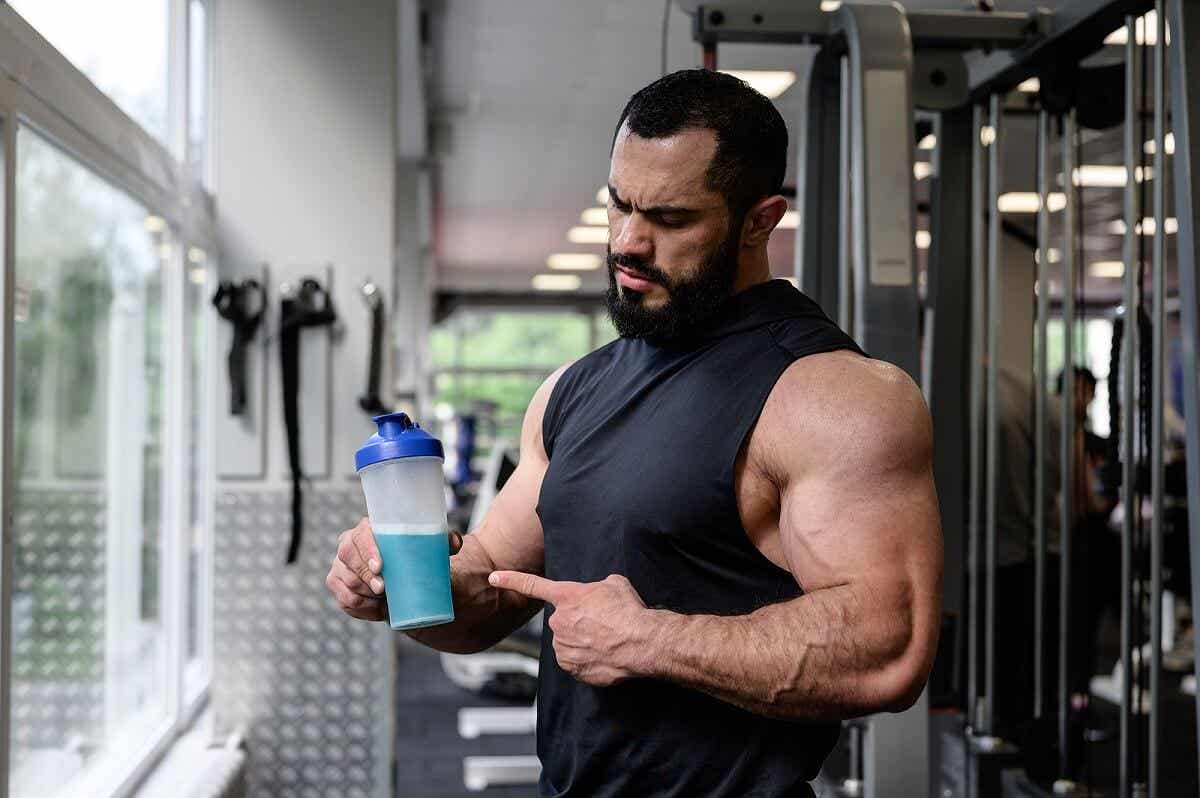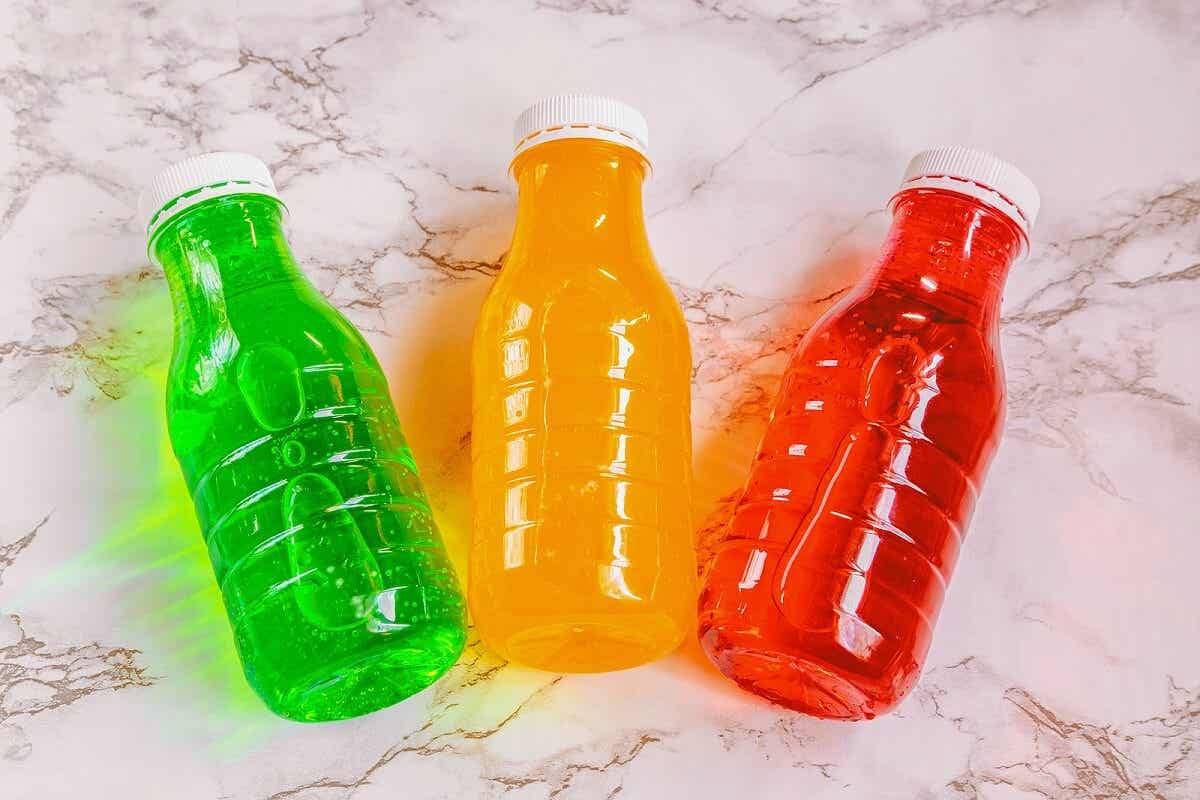Hypertonic Beverages: What Are They and When Should You Consume Them?


Written and verified by the nutritionist Maria Patricia Pinero Corredor
Have you ever heard of hypertonic beverages?
The world of sports drinks can be a confusing place. However, each sports drink has a specific role. For example, hypertonic drinks, rather than giving you super special powers, give you energy and replenish lost electrolytes on the fly.
Body fluids maintain a perfect balance of electrolytes and water both inside and outside the cell. BMJ magazine explains that, when this balance is broken, dehydration or hyperhydration can occur, endangering the health of the athlete.
Beverages are classified according to their concentration of liquids and solids concerning the human body. Hypertonic beverages offer a higher concentration of water, sugars, and salts than blood. They’re advantageous for certain types of exercise, but you must be careful during their administration.
Keep reading to learn more!
When do people consume hypertonic beverages?
Hypertonic beverages are formulated to be able to recharge the carbohydrate that stores energy in the liver and muscles, called “glycogen”. They can also maintain a possible anabolism and hydroelectric balance. Due to their hypertonic characteristic, they can even be an aggregate to proteins.
According to a study in the Journal of Applied Physiology, people use them as recovery drinks after intense exercise at low temperatures. There’s limited glycogen, but we can save it by maintaining blood sugar through the supply of glucose.
Despite having a slow absorption rate, it helps replenish glycogen stores. The body tends to absorb liquids faster than solid foods.
Research explains that adding carbohydrates to the drink and consuming it at a rate of 1 gram per minute decreases the use of glycogen stored in the liver by 30%. That’s why, in exertion exercises, carbohydrates in energy drinks improve the athlete’s performance.

Why should we drink them in intense exercise, but at low temperatures?
Hypertonic beverages have a carbohydrate concentration of more than 8%. When ingested, the body releases water to dilute it until it becomes equal to the plasma concentration. This can cause dehydration in the athlete.
Therefore, hypertonic drinks aren’t recommended in situations where it’s very hot or if the athlete sweats excessively. They’re to compensate for energy expenditure through carbohydrates, but not excessive fluid intake.
On the other hand, the inclusion of proteins is justified to stimulate the synthesis of muscle structures damaged during sports practice. It also helps to produce more glycogen when carbohydrate availability isn’t correct.
Keep reading: The Health Risks of Energy Drinks
How many hypertonic drinks should I consume?
When there’s a need to recover all the nutrients lost during exercise, doctors recommend you drink 1 hypertonic drink at the end of the session. However, the amount may vary depending on the intake during exercise, the time available for recovery, or the objectives set.
In general, the amount depends on the intensity and duration of the exercise, as well as the weather conditions. Science & Sport magazine points out that the emptying of the stomach depends on several factors, especially the solids dissolved in the drink and its energy value.
From 600 milliliters and above, the greater the volume of gastric contents, the faster the emptying. Thus, as the volume decreases, the stomach empties more slowly.
For this reason, to maintain adequate emptying, it’s best to replenish the quantities eliminated by drinking the beverage repeatedly.
- Optimal intestinal absorption for water is estimated at 600 to 800 milliliters, and 60 grams for glucose.
- If more than 1.2 liters of liquids are ingested per hour, the excess can accumulate and cause intestinal discomfort.
Discover: 3 Healthy Smoothies for Weight Loss
How long does it take for the body to absorb each drink?
In a publication in Medicine and Science in Sports and Exercise, a group of sports experts defined that the amount of carbohydrates to be supplied in the drink depends on the following:
- The limit of glucose utilization by the athlete, which is at 60 grams per hour. The maximum amount to be supplied is reached with 1200 milliliters of the drink in 1 hour, as long as the solution contains more than 8% carbohydrates.
The American College of Sports Medicine recommends that hypertonic beverages have a high glycemic index carbohydrate for rapid absorption into the blood. It further contends that the best utilization of the beverage is achieved with 75% of a mixture of glucose, sucrose, fructose, or maltodextrin.
- The limit of gastric emptying and intestinal absorption of the beverage. The time it takes for the stomach to empty 1 liter of liquid ranges from 1 to 1.5 hours.
Differences between sports drinks
People use drinks containing salts or electrolytes for high-performance exercise; their concentrations may differ and, therefore, their application in sport. In addition to hypertonic drinks, there are others such as isotonic and hypotonic drinks. Let’s see what their differences are.
Isotonic drinks contain between 4 and 8% sugars, and the electrolytes are at the same osmotic pressure as blood, i.e. 330 milliosmoles per liter. When ingested, the intestine absorbs it and passes without difficulty into the blood. Therefore, it assimilates the components quickly and optimally.
These drinks are ideal for intense exercise, hot environments, or when the athlete sweats a lot. They help replenish fluids, electrolytes, and glucose as a source of energy. Other advantages are the following:
- Delayed fatigue
- Decreased risk of cramps
- Improved performance
- Accelerated recovery process
In hypotonic drinks, the concentration of salts is lower than that of blood plasma. They’re ideal for moderate or low-intensity exercise, with little sweating, lasting less than 1 hour, and not requiring extra electrolyte intake.

Can I replace the hypertonic drink with another energy drink?
Hypotonic drinks don’t require carbohydrates. Fresh coconut water is a good example, as it contains less than 4% sugar and hydrates quickly. Therefore, it’s sufficient to replenish fluids before, during, and after exercise.
Bear in mind that each drink has a specific function depending on the demand and type of high-performance exercise. Hypertonic drinks are formulated with more than 8% carbohydrates and electrolytes. Their main function is to recharge energy rather than to hydrate.
Therefore, specialists recommend their intake to recover the energy expended during high-performance exercise at low temperatures. In fact, it’s best to first seek advice from a nutritionist and sports expert. A concentrated orange or carrot juice with a pinch of salt are excellent examples of natural hypertonic drinks.
All cited sources were thoroughly reviewed by our team to ensure their quality, reliability, currency, and validity. The bibliography of this article was considered reliable and of academic or scientific accuracy.
- Noakes TD. Commentary: role of hydration in health and exercise. BMJ. 2012 Jul 18;345:e4171.
- Brooks GA, Mercier J. Balance of carbohydrate and lipid utilization during exercise: the “crossover” concept. J Appl Physiol (1985). 1994 Jun;76(6):2253-61.
- Burke LM, Claassen A, Hawley JA, Noakes TD. Carbohydrate intake during prolonged cycling minimizes effect of glycemic index of preexercise meal. J Appl Physiol (1985). 1998 ;85(6):2220-6.
- Wallis GA, Yeo SE, Blannin AK, Jeukendrup AE. Dose-response effects of ingested carbohydrate on exercise metabolism in women. Med Sci Sports Exerc. 2007 ;39(1):131-8.
- American College of Sports Medicine, Sawka MN, Burke LM, Eichner ER, Maughan RJ, Montain SJ, Stachenfeld NS. American College of Sports Medicine position stand. Exercise and fluid replacement. Med Sci Sports Exerc. 2007;39(2):377-90.
- R.J.MaughanS.M.Shirreffs. Rehydration and recovery after exercise. Science & Sports. 2004, 19, 5, Pages 234-238. Disponible en: https://www.sciencedirect.com/science/article/abs/pii/S0765159704000516
This text is provided for informational purposes only and does not replace consultation with a professional. If in doubt, consult your specialist.








